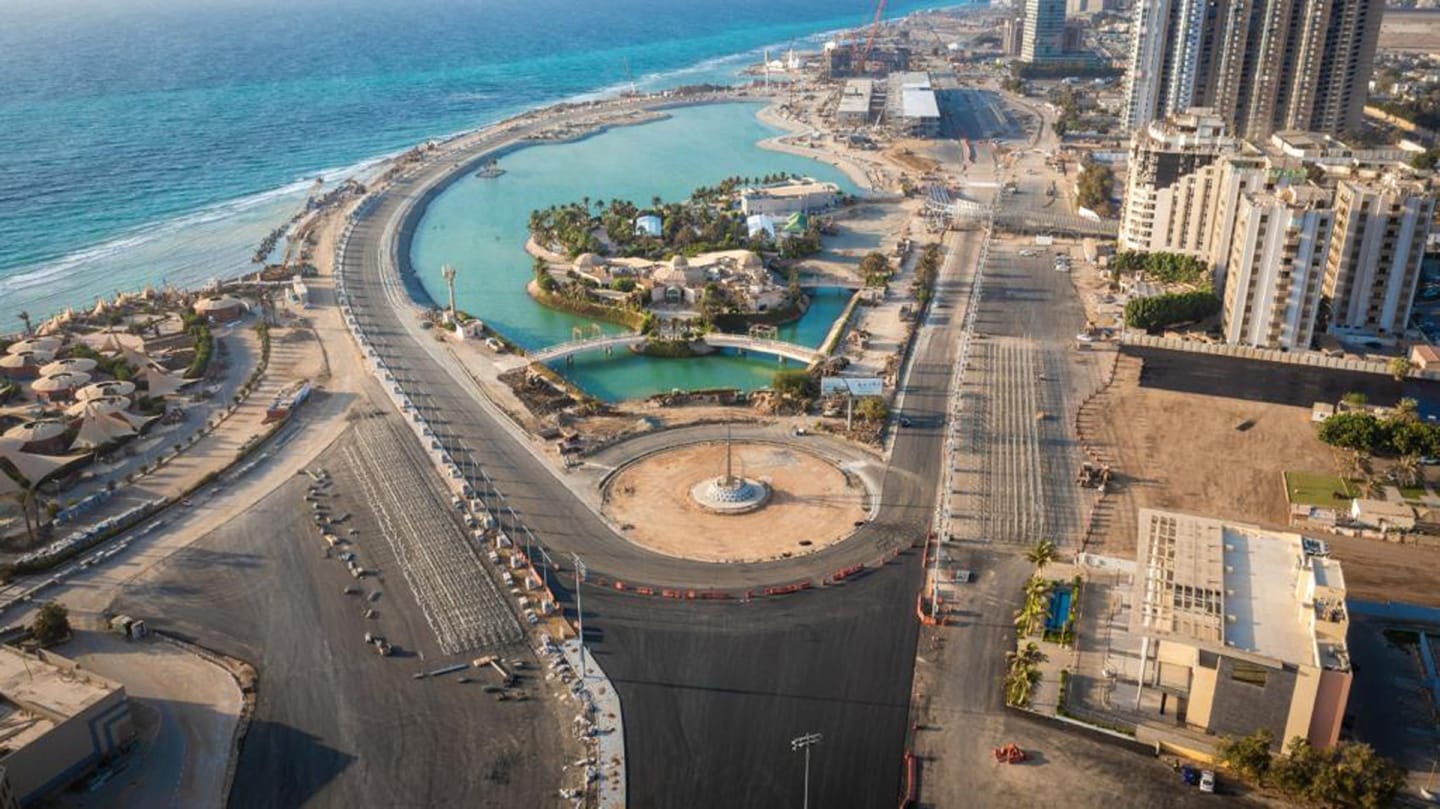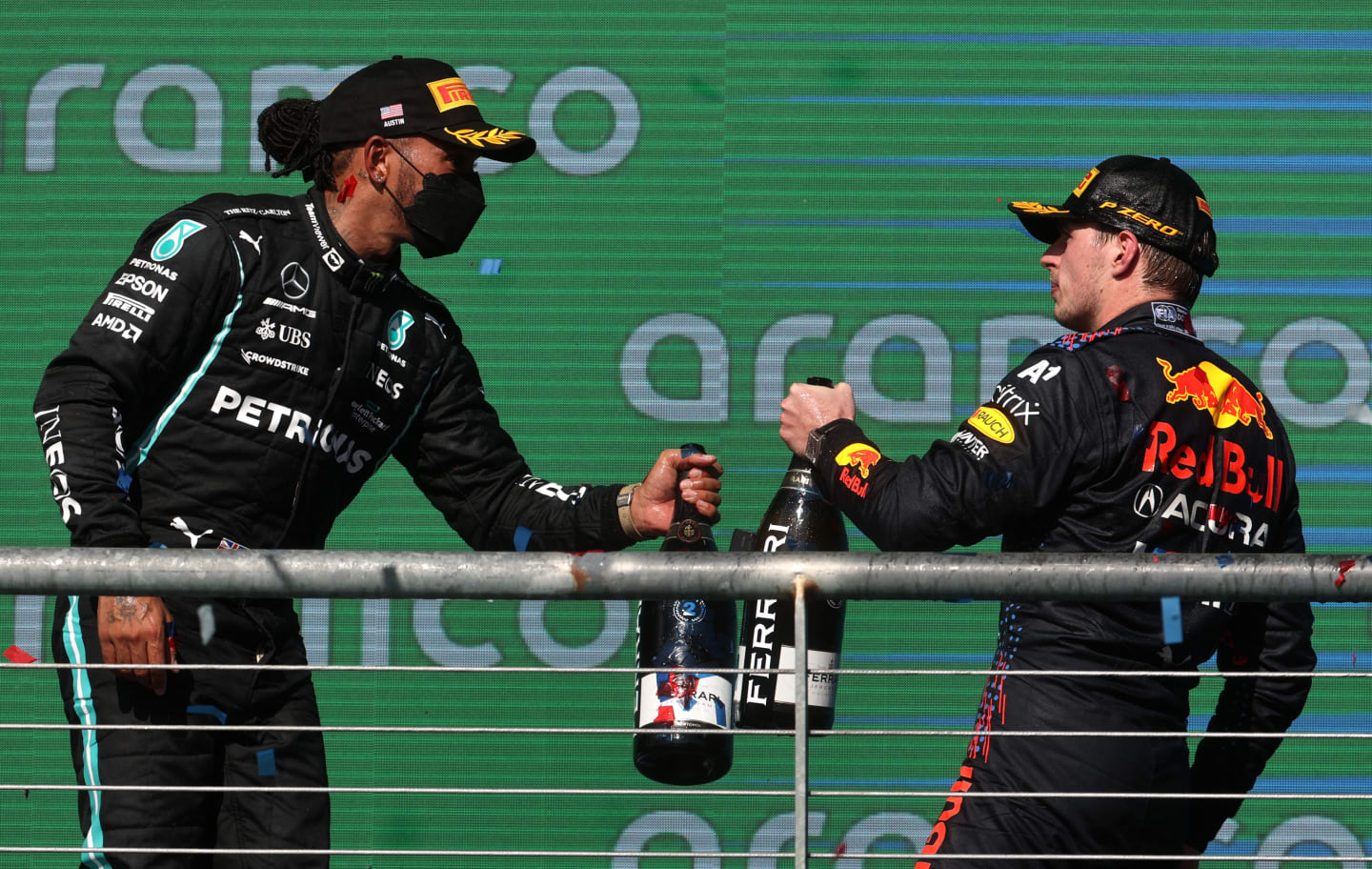
Feature
The circuit, the challenge, and the culture – How Jeddah is shaping up for the first-ever Saudi Arabian Grand Prix
Share

“The circuit in Jeddah will be extraordinary,” says F1 track designer Carsten Tilke. “It will be a different kind of street track, something the world has never seen before.”
From the back seat of a golf-buggy, you get the impression Tilke might be right. A typical street circuit consists of slow 90-degree bends that weave around houses, but that is not the case with the new track being built in Saudi Arabia.
The reclaimed land north of the port city of Jeddah was devoid of buildings, allowing the designers a free hand to create something unique. The result is the longest – and fastest – street circuit in Formula 1 history. With less than 50 days until the first car roars out of the pit lane for practice, we decided to pay the new venue a visit.
FIRST LOOK: Fastest ever F1 street circuit revealed for Saudi Arabian Grand Prix in Jeddah
Jeddah Street Circuit first look: F1's brand new track in Saudi Arabia
What's the circuit like?
The most striking observation of the Jeddah Corniche Circuit is its proximity to the sea. It’s fine to describe Zandvoort as being a stone’s throw from the coast, but standing at Turn 22, you are right on the shoreline. A strong overarm would easily land a decent-sized pebble into the mighty waves of the Red Sea.
Our site visit takes place at the second proposed DRS zone, after we’ve driven the first half of the lap in a cavalcade of Kawasaki buggies. Our vehicle was piloted by Prince Khalid, the head of the Saudi Automobile & Motorcycle Federation.
At 6.175km, Jeddah will be one of the longest circuits on the calendar. Unlike the extensive lap of Spa, it is not spread over a huge area but runs back and forth on a narrow strip of land, parallel with the coast.
WATCH: Time-lapse of the world's largest Lego Formula 1 car build ahead of Saudi Arabian GP
Heading away from the start line, the first corner is a left-right kink, then from Turn 4 onwards the track opens into a series of switchbacks which will punish the smallest of mistakes. After a short straight, we approach the mighty Turn 13 which is a long-radius left-handed hairpin. Under the floodlights, this 12-degree banked, high-speed corner will be spectacular for drivers and spectators alike.
The return leg along the shore has a similar feel to the opening sequence of bends, but even from the back seat of a slow-moving buggy, you sense this will be an incredibly quick section of race track. The average speed for the 27 turns is estimated to be above 250km/h, making it the fastest street course to host a Grand Prix.
Ross Brawn expects new Jeddah Circuit to promote 'wheel to wheel racing'
A challenge for the drivers
It’s been a remarkable feat to create a new circuit in record time. While a larger-scale project for 2023 is underway at Qiddiya (near the capital Riyadh), there was just 12 months to build an entirely new facility.
A route was mapped out around the lagoons on Jeddah’s northern coast line and as Carsten Tilke explains, the location gave the track designers the freedom to create a special test for the drivers.
READ MORE: 6 key facts about the ultra-fast Jeddah Street Circuit
“Why this circuit works so well is that it will have the atmosphere of an urban venue, but the space and run-off so we can increase the speed of the corners,” says Tilke. “This is something you can normally only do at a permanent facility, but here we have been able to create very challenging fast corners that the drivers will love.
“I have driven the lap many times on the simulator and with sections featuring walls close to the edge of the circuit, you really need to concentrate to avoid making a mistake. It will be very rewarding for those who can master all 27 corners.”
WATCH: Take an onboard lap around Saudi Arabia’s flat-out Jeddah Street Circuit

An aerial image of the circuit as it nears completion
What about the heat?
During our visit in early October, construction work was progressing well, with the mercury rarely dipping below 32 degrees. Standing on the smooth track surface at Turn 22, the cranes arced back and forth, framed in the background by a picturesque mosque and the setting sun. Visiting the site just before dusk helped avoid the hottest temperatures of the day, which is why the inaugural race is scheduled for the cooler first week of December – and will be held at night.
Because of its coastal location, the climate in Jeddah is not just hot but humid too, similar to the conditions teams and drivers used to face at Sepang in Malaysia.
Right on the shoreline, there is a sea breeze that offers a cooling respite from the intense sun. That is why the promenade that extends along the coastline of the city is always bustling with families at sunset, as they enjoy the cooler night air.
Saudi Arabian GP: How the Jeddah Street Circuit was built
A historic setting...
Jeddah sits on the west coast of Arabia and for centuries has acted as a gateway for pilgrims travelling to the holy city of Mecca. This rich history is evident when you explore the streets and buildings of Old Jeddah, now protected as a UNESCO World Heritage site.
This ancient setting contrasts seamlessly with the luxury hotels, retail malls and new marina which will form part of the extended corniche where the circuit is situated. With outdoor gyms, two-way cycle lanes, beach volleyball and tennis courts, accompanied by coffee shops, restaurants and mosques, the corniche is the focal point for the community. And with 70 per cent of the population under 30, there is a vibrant atmosphere.

This new circuit will provide the backdrop to one of the greatest title battles in F1 history
…for a historic moment
The first-ever Saudi Arabian Grand Prix is an extension of the country’s Vision 2030 policy to modernise society and promote tourism. When it hosts the race on the weekend of December 3-5, it will be the largest sporting event the kingdom has ever held. As the 34th country to host a World Championship race (Qatar will be the 33rd) it will mark a historic moment for both the region and Formula 1.
“The people here are amazingly proud of their country, and they feel this is a wonderful opportunity to show the rest of the world this is a special place,” says Martin Whitaker, CEO of the Saudi Arabian Grand Prix. “When Formula 1 fans come to Jeddah and enjoy the sunshine, the sea, the food and the great people here, they will leave enriched after their visit.”
Throw in a gripping world title battle that could be settled in Jeddah, and this will be a race not to be missed.
Share
YOU MIGHT ALSO LIKE
News Russell admits surprise at pace of Mercedes’ car as he predicts ‘interesting test’ for team in Japan
News Alpine reveal ‘misjudgement’ that led to heavy Doohan crash in Suzuka FP2 as they assess chances of fixing car for Qualifying
News 'He’s an extremely fast driver’ – Gasly assesses whether former team mate Tsunoda can succeed in ‘complicated’ Red Bull opportunity
Podcast F1 EXPLAINS: How to drive an F1 car and why Suzuka is such a challenge – with Pedro de la Rosa




